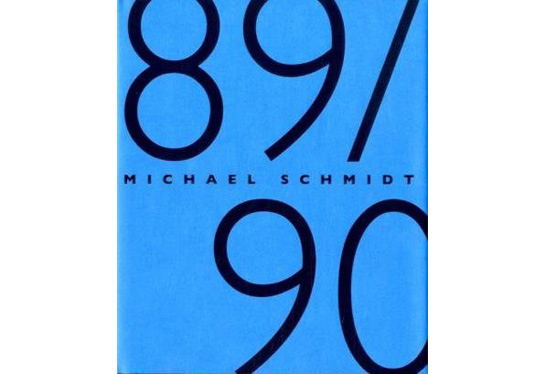Review: 89/90 by Michael Schmidt

There is the official story of German photography, which comprises the usual suspects (Sander, the Bechers, Gursky, …). No need to repeat it here. There are a few things that are very interesting about that story. First of all, it’s woefully incomplete. But that’s not so interesting (it’s actually more propaganda than anything). But second, there is the fact that most of those usual suspects might be German photographers, but their work is not necessarily quintessentially German. Maybe their approach to work is (here we are again in the not-so-interesting territory), but the work itself isn’t. Andreas Gursky basically has become the inofficial photographer of globalization (sans its ugly underbelly). The Bechers documented industrial structures in many different countries. August Sander aimed at producing a truthful portraits of the Germans. But I’m happy to argue that the reason why so many people love that work is because it actually is more about the human condition than anything. And as I’ve argued before, most German photographers after the war (excluding the younger generation which has not yet been canonized) have been extremely careful to avoid dealing with German history. Which brings me to Michael Schmidt (also see this page). (more)
Schmidt is well-known amongst photographers. Schmidt was instrumental in bringing a lot of American photographers to Germany, actually Berlin, many years ago. But whenever you see the official story of German photography, chances are you won’t find his name. With large parts of his work centered on Berlin, Schmidt also produced work that deals with the German past and especially its consequences. If you wanted to look at photography that was produced in Germany and that gave you a good impression of the country (that might be a good definition of German photography?), Schmidt should be your first stop.
I was reminded of this fact during a recent visit to Berlin (where, as an added bonus, I also had the chance to talk to the artist). Riding around on my bike, I felt as if I was surrounded by Michael Schmidt photographs. I don’t mean this in a superficial sense - it could be easily seen as that. Whatever Schmidt does, or however he does it, his often (seemingly) very unassuming photographs capture the mood in ways that are very hard to describe.
We could take 89/90 as an excellent example. Released at the occasion of a major Michael Schmidt retrospective at Munich’s Haus der Kunst (curated by Thomas Weski), the book contains previously unreleased photographs that Schmidt took in 1989/90 in Berlin when the Wall was coming down or had just come down. Don’t expect to see a lot of the Wall. Don’t expect to see people chiseling (or whatever other visual cliches there might be). If you had the chance to visit Berlin when the Wall was still up you’ll remember that it clearly defined the atmosphere in the city. You’d notice its presence even when you didn’t see it. That atmosphere you see portrayed in 89/90, in often striking ways.
My favourite image might be the one that shows an East German army jacket, made to hang on a pole that supports a couple of young trees (using an actual coat hanger, no less). In the background, one of the many rather nondescript, generic Berlin buildings is visible, with what might or might not be parts of the Wall (who knows?). It’s such a mundane, yet poignant photograph. It’s beautiful. What else is there to say?
As a book, 89/90 is an unassuming affair. It’s a rather small book, but I think the size works extremely well. Schmidt also employs repetitions in the book, where you get to see the same image more than once. In fact, the book ends with the same image shown three times. That might sound weird, but it works. You have to see it to believe it.
Recommended.
89/90, photographs by Michael Schmidt, essay by Chris Dercon, 100 pages, Snoeck Verlagsgesellschaft Mbh, 2010